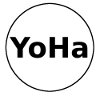- Wasted
- Plastic Raft
- Wrecked
- Database Addiction
- Endless War
- Evil Media Distribution Centre
- Invisible Airs
- Coal Fired Computers
- Database Documentry
- Aluminium
- Lungs
- MF2012
- Requiem for Cod

Field Researchers
To All Field Researchers:
On behalf of collaborators CAE and YoHa, thank you for volunteering to
help collect the data necessary to complete the Graveyard for Lost
Species. Unlike a majority of sociological fieldwork, this should
actually be a rewarding assignment, as you won’t be prying into people’s lives for the purpose of uncovering public secrets that they would prefer to keep undisclosed and unrepresented. We are after a data set that the people who populate our area of investigation are dying to reveal and have represented. We are after information on the people,
places, things, and processes that have been taken out of public
visibility in the name of progress, optimization, enrichment, and even
“economic justice.” For the disappeared, there are numerous witnesses,
traces, stains, and, at times, official records of their existence.
While the disappearance of the displaced, dispossessed, evicted, and
extinct has progressed to a point of general erasure in public
perception, the process is by no means complete. We want to give get
lost places, things, processes, and people back on the visible public
record and into the public imagination.
Fortunately for us, these witnesses want to speak about the disappeared.
They are hoping for someone to tell their story to who has an interest
in amending the social record. They want to hail the dead, the lost, and
the disappeared to reconstitute them as significant, and to save them
from their fate as an “acceptable loss” that gives the public permission
to forget. Most importantly, you will be giving our most precious
resources, the witnesses, the ability to recreate the dead in some way—
perhaps not as they were in any objective sense, but as our witnesses
need them to be.
We want to begin with a very wide net. Bring in everything that people
want to tell you. We want as many stories as possible. It does not
matter if they do or don’t seem relevant to the project; collect
everything, relevance will designated at a later date. We want stories
about all the people who live only in memory (whether dead or evicted).
We want stories about lost professions; lost creatures; lost rituals,
events, and holidays; lost places and architectures (whatever their
significance, sacred or profane); lost geographies (physical or
cultural); lost health (which could be a subcategory of cultural
geography); and lost forms of economic and cultural organization. From
there, we will select from the absent those to be inscribed back into a
precarious presence on our boat. (In the end, this may be the final
point: that through this specific example, we can make present and call
attention to the unnecessary precarity that is the general condition of
life for the overwhelming majority of people on this planet.) The chosen
will be those eliminated from significance for the most unnecessary of
reasons, which all too often comes down to one reason: profits for the
few. In this manner, the project will also be steeped in marking the
direct abuse of power, and the interruptions of life so abrupt that the
fall from function to dysfunction, from robust to extinct, from
happiness to despair is a matter of disbelief. Once we have selected the
most relevant data to our project, the longer narratives will become
solely supplemental. On the ship, we will simplify the narrative to the
essential components of names, events, dates, places, and creatures—
tombstone narratives. We only need to demonstrate that the disappeared
are still haunting the estuary. That is the experience we hope to
deliver as the curious explore the decks of what could be considered a
contemporary version of a ghost ship.
We are not doing social science in any empirical sense, nor are we doing
scientific ecological study. This is an exploration of the qualitative.
We are working with personal and collective memory—in all its
unreliability, misalignments, and fragmentations. So if someone were to
say, “the eels of the estuary are gone,” we accept that as told,
regardless of whether an estuary biologist says, “There is still a
population of eels in the southwestern section of the river bottom.” The
important bit in this example is that a relationship that was once
productive and probably symbiotic is gone, and this absence has a place
in this person’s memory.
We will not be making a historical narrative, although we will include
historical figures and events—mutinies and mutineers, for example. The
inscriptions will be there for those who know, and for others to wonder
(if their curiosity gets the better of them, they can explore the
database). As with all ghost ships, there should be a sense of mystery.
In this way, we hope to have this monument align with actual memory. It
will be imperfect; at times indecipherable; fragmented; ever eroding,
yet recoding; and of indeterminate duration.
Thank you for your help,
CAE and YoHa
- By harwood at 15 Jul 2015 - 9:22am
 bnr#62 => Coal Fired Computers, Tantalum Memorial, Arnolfini, Bristol UK
bnr#62 => Coal Fired Computers, Tantalum Memorial, Arnolfini, Bristol UK